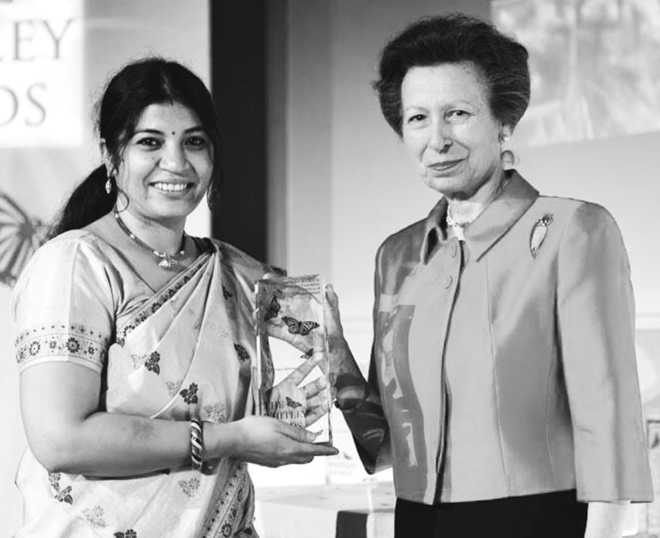Bijay Sankar Bora in Guwahati
Last Sunday was quite unusual in the twin villages of Dadara-Pacharia near Guwahati. The occasion was the marriage reception of Ranjit Malakar and Nirmali Barman. The groom’s family was particularly voluble about conservation of Greater Adjutant Stork, the prized possession of the twin villages. Then, all came together: it was time for some poetry and dance-drama with the stork (hargila) as the theme. The highly endangered hargila — swallower of bones — has given a global recognition to the villages.
Located about 30km to Guwahati city’s north-west, the thickly populated Dadara-Pacharia are easily forgettable. For conservationists, the area is a hub of about 600-plus Greater Adjutant Stork. The Switzerland-based International Union of Conservation of Nature (IUCN enjoying consultative and observer status at the UN), has listed the scavenger bird as ‘endangered’ on its Red List. The bird owes its life to the untiring efforts of a young woman biologist, Purnima Devi Barman. With Aaranyak, a top-bracket nature conservation organization, she works with villagers, explaining them the importance of the winged species for the mankind. The stork lives perched atop tall trees grown on village homesteads.
The villagers fondly call Purnima ‘hargila baideu’ (elder sister). “We are amazed at baideu’s passion to save the stork. Her husband, Dr Rathin Barman, is a conservation officer. They have school-going twin-daughters,” says Mamoni Malakar, a member of about 250-women hargila army of foot soldiers who help Purnima. The ‘baideu’ works under the aegis of Community Leadership Programme (CLP) and Aaranyak.
Hardly 1,200 of these storks have survived in India and Cambodia. Assam accounts for 75% of the birds’ population — Kamrup district alone accounting for 600 of them. In recognition to her decade-long conservation efforts with the involvement of the community, Purnima was chosen for this year’s Whitley Award, popularly called the Green Oscar, along with five other globally acclaimed conservation workers.
Her work has made some business sense as well: she facilitated three-month skill enhancement training for 35 women weavers from these villages at the Institute of Fashion Technology at Sualkuchi, the silk town of Assam. She also managed 28 looms for village weavers from the State Institute of Rural Development (SIRD). “These looms have become a source of livelihood for many women in the villages. She also provides us with yarns and, whenever she can get, a donor. We now make gamochas (traditional Assamese designer towel) and traditional silk and cotton Assamese dresses with pictures of hargila woven on them, fetching very good prices, especially from bird enthusiasts and VIPs visiting the place,” says Mamoni Malakar.
For Purnima, the journey started with a distress call while she was pursuing her Ph.D in ‘breeding biology of the greater adjutant storks’ about a decade back. “I was informed about the project site where a man was cutting down a tree where nine storks were nesting. I rushed to find that tiny chicks had fallen on the ground while the man continued with the chopping. I tried to dissuade him, but realized that he was totally unaware about the importance of these birds. That day I decided that the villagers would have to be made aware and a stakeholder of my conservation efforts. I had to put my Ph.D on the back burner,” Purnima says.
Scavenger storks feed on carcasses, the prime reason why villagers consider them dirty and cut the trees where these birds nest. “I am worried about shrinking wetland areas in Assam, especially around Dadara-Pacharia, as it has affected the population of this stork species which depends on aquatic species for food. The government needs to implement its wetland conservation policy strictly,” she says.
Unlock Exclusive Insights with The Tribune Premium
Take your experience further with Premium access.
Thought-provoking Opinions, Expert Analysis, In-depth Insights and other Member Only Benefits
Already a Member? Sign In Now










